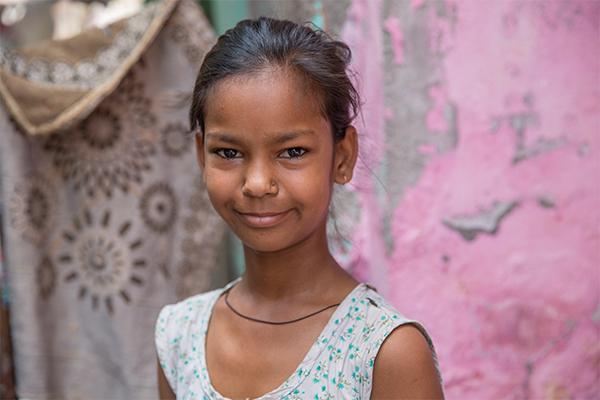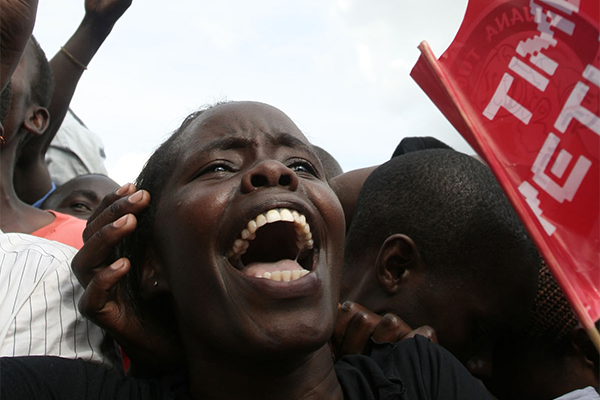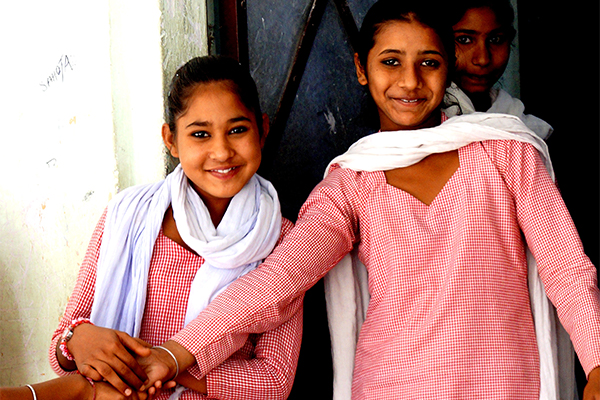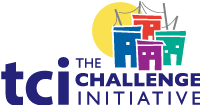AYSRH Toolkit
Demand Generation for Youth- Home
- Help and Support
- Close
- Toolkits
- Global Toolkit
- AYSRH Toolkit
- Hub Toolkits
- Core High-Impact Practices
- Gender Essentials Mini Course
- Close
- Resource Collection
- Community of Practice
- Coaching
- Log In/Register
- My Profile
- English
Gender Transformative Programming
What is it?
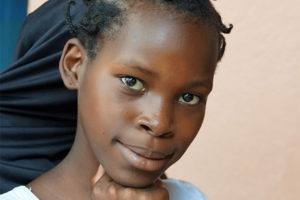
© 2017 Arturo Sanabria, Courtesy of Photoshare
“Gender transformative” refers to efforts to change gender and social norms to address inequalities in power and privilege between persons of different genders, in order to free all people from harmful and destructive norms. These norms include gender roles, expectations, stereotypes, and harmful attitudes, customs, and practices, including gender-based violence (MenEngage Alliance, 2017). Gender transformative programming enables individuals to question and critically analyze issues of gender inequality and injustice, and provides them with opportunities to challenge harmful norms.
What Are the Benefits?
- Gender equitable communities ensure that all adolescents and young people have better sexual and reproductive health (SRH) outcomes: Gender norms are established early in life and have several negative consequences (Blum et al., 2017). For girls these include child marriage, early pregnancy, dropping out of school, exposure to STIs including HIV, and vulnerability to gender-based violence. For boys these include engaging in or being affected by violence, accidents and injuries, and substance use. Adopting gender transformative approaches results in more gender equitable communities that reject destructive gender and sexual norms for all, improving access to SRHR information and services and enabling better SRHR outcomes (Chandra-Mouli et al., 2017).
- Addressing urban girls and young women’s particular vulnerabilities ensures better SRH: The “urban health penalty”—the likelihood of poor urban young people being at greater risk of negative health outcomes—affects early adolescent females in particular. This is due to several factors, including a lack of adequate clean water, sanitation and hygiene; lack of knowledge and access to SRH services; and limited life skills. Evidence from Chennai, India reveals that these result in menstrual morbidity and reproductive or urinary tract infections (GAGE, 2017). Factors like child marriage, limited education and livelihood opportunities, social isolation and marginalization, and unsafe sexual relations over which girls have limited or no control contribute to girls’ higher risks of negative health outcomes, including HIV (Erulkar et al., 2012).
- Challenging gender norms increases contraceptive uptake: Gender norms in most contexts require young men to be knowledgeable about sex and young girls to be sexually ignorant. This makes it difficult for either to access adequate SRH information and services, in addition to other barriers that young women and men face in having their sexual and reproductive rights fulfilled (USAID, FP HIPs, 2015). The same norms also deter young women from obtaining, carrying or negotiating the use of condoms (STEP UP, 2014). Working on changing these gender norms can enable better access to SRH information and services, including to contraception, and a decrease in violence (icddr,b, 2014).
How to Implement?
Promote community dialogue on SRH and gender norms
- For harmful gender norms like child, early or forced marriage, or female genital cutting/mutilation, working with faith or religious leaders can have a strong impact within conservative societies (IRH, 2016).
- On issues of early pregnancy, spacing, and couples’ communication, working with mothers-in-law can be effective, as they are often the decision-makers on the number and spacing of children and young married women’s access to contraception (E2A, 2014).
A useful tool to enable communication targeted at parents and community members to influence the promotion of girls’ education and reduction in domestic violence is PROMISES by Save the Children. Another useful toolkit on engaging and mobilizing the community is the Community Action Cycle: Implementation Guide by the Gender Roles, Equality and Transformations (GREAT) Project.
Build girls’ and young women’s human and social capital
Educate boys and young men on SRHR, including gender
Example: Working with boys and young men in Mumbai, India
A Systematic Review of Positive Youth Development Programs in Low- and Middle-Income Countries by USAID documents “Parivartan,” a program implemented in Mumbai from 2008 to 2012. It worked with boys and young men through cricket clubs, with male coaches training them on challenging and questioning norms around masculinity, respect for girls and women, and preventing violence against women. The program had positive effects on participants’ beliefs on gender equity and traditional notions of masculinity. This review also emphasized that programs targeting activities to males and females to address unequal gender norms were the most effective in reducing gender inequality (USAID, 2017).
Address specific gender discriminations or injustice
- Pregnant girls or young mothers having to drop out of school. Supporting young mothers to stay in or return to school ensures that they are still able to gain the skills and resources required for good SRH outcomes despite an early pregnancy (E2A, 2014) .
- You may need to address girls’ and young women’s lower socio-economic status where transactional sex is an important economic resource for them. A large service delivery improvement effort in Tanzania failed to demonstrate an impact on contraceptive use among young people because it did not address issues of transactional sex among young girls and social norms of masculinity (USAID, FP HIPs, 2015).
- Gender-based violence (GBV) can negatively impact contraceptive uptake. Where there is high prevalence of GBV, there would be a need for multisectoral GBV prevention and support interventions.
What Is the Evidence?
- A Population Council study on incorporating male reproductive health services into female-focused family planning programs in Bangladesh concluded that it did not discourage women from attending clinics; increased uptake of services from both sexes; enabled service providers to increase their technical knowledge about male reproductive health problems, particularly with regard to STIs and RTIs (Population Council, 2004).
- Group-based mentoring programs have demonstrated improvements across multiple outcomes including RH knowledge and behavior, academic achievement, financial behavior, and social networks, as well as decreases in the experience of violence. The most successful mentoring programs incorporated components aimed at improving girls’ and young women’s protective assets. For example, some programs provided access to safe, social spaces outside the home where participants were able to develop and strengthen their peer network. Others included the delivery of curriculum-based education on RH, gender and financial literacy. Finally, more frequent mentor/mentee meetings (once per week) over a longer period of time (6 months or longer) were associated with improved RH outcomes (Plourde et al., 2017).
- An intervention that includes multiple components operating at different levels of the ecological model is ‘CHOICES’ in Nepal. This had a component on communication on gender inequality between parents and children at the household level, and one at the community level (Save the Children, 2009). Evaluation of this program demonstrated improvements in attitudes of adolescents on sharing household tasks, control and dominance, and girls’ education (Chandra-Mouli et al., 2017).
TCI APP USERS PLEASE NOTE
You will only receive CERTIFICATES by email – when earning a score above 80% – and will not be able to view or print a certificate PDF from the TCI app.
Test Your Knowledge
Earn a Certificate
Quiz Summary
0 of 5 Questions completed
Questions:
Information
You have already completed the quiz before. Hence you can not start it again.
Quiz is loading…
You must sign in or sign up to start the quiz.
You must first complete the following:
Results
Results
0 of 5 Questions answered correctly
Your time:
Time has elapsed
You have reached 0 of 0 point(s), (0)
Earned Point(s): 0 of 0, (0)
0 Essay(s) Pending (Possible Point(s): 0)
Categories
- Not categorized 0%
- 1
- 2
- 3
- 4
- 5
- Current
- Review
- Answered
- Correct
- Incorrect
-
Question 1 of 5
1. Question
Adopting gender transformative approaches results in more gender equitable communities that reject destructive gender and sexual norms for all, improving access to SRHR information and services and enabling better SRHR outcomes.
CorrectIncorrect -
Question 2 of 5
2. Question
The “urban health penalty” is the likelihood that poor urban young people are at greater risk of negative health outcomes. What are some of the factors that contribute to early adolescent females being at the highest risk among urban young people?
CorrectIncorrect -
Question 3 of 5
3. Question
Changing individuals’ behavior and beliefs is possible through short-term programmatic interventions. However, changing harmful gender and sexual norms in a community or a society can take generations.
CorrectIncorrect -
Question 4 of 5
4. Question
How do you intend to use the information reviewed and/or tools that you accessed?
-
This response will be awarded full points automatically, but it can be reviewed and adjusted after submission.
Grading can be reviewed and adjusted.Grading can be reviewed and adjusted. -
-
Question 5 of 5
5. Question
How useful did you find the information and/or tools presented on this page? Please write your response in the box below using one of the following phrases: Very useful, Useful, Somewhat useful, Not useful.
Feel free to comment on why you made that choice.
-
This response will be awarded full points automatically, but it can be reviewed and adjusted after submission.
Grading can be reviewed and adjusted.Grading can be reviewed and adjusted. -
Approaches: Demand Generation for Youth
Helpful Tips
- Comprehensive sexuality education programs should include an empowerment approach with an emphasis on gender and rights. Young people with more egalitarian attitudes about gender roles are more likely to delay sexual debut, use condoms and practice contraception.
- You may need to provide safety from sexual harassment or assault to girls and young women who want to access your interventions or services. For example, enable them to travel in groups, provide a trustworthy chaperone or vehicle, etc. as exemplified in the Adolescent Girls Initiative of the World Bank; or using an “official” space as done in the Biruh Tesfa program in Ethiopia.
- Programs for female adolescents should build their social capital (e.g., support networks of peers, work colleagues, teachers, or others who they can rely on for providing information, advice, guidance and support) and inclusion (participation in and contribution to social, economic and political life). Provide opportunities for them to stay in school and obtain positive and non-exploitive forms of work also reduces the likelihood of early sexual debut and sexual coercion.
Youth Participation
- Engage young women and men in dialogue about gender, keeping in mind that females and males have different lived experiences of participation. For example, females have voiced a need for for physical, psychological, and digital security systems to protect against forms of backlash and violence due to security risks associated with participation in AYSRH activities.
Data Management
- Ensure that all monitoring and evaluation data is gender-disaggregated, including by several different gender identities.
Multisectoral Collaboration
- Partner with feminist and women’s organizations who have a holistic focus on women’s empowerment.
- Make linkages with health and legal services for those who experience gender-based violence.
Challenges
- Programs should not focus on only transferring knowledge on gender and SRHR, but also find ways of affecting individual decisions and behavior.
- Changing individuals’ behavior and beliefs is possible through short-term programmatic interventions. However, changing harmful gender and sexual norms in a community or a society can take generations. Measuring and reporting on progress over longer timeframes can be a challenge. To learn more in-depth about how community and social norms change occurs, you can refer to Social Norms and Girls’ Well-Being: Linking Theory and Practice by Data2X.
- Programmers must think through the implications and risks for individuals when they return to their communities. For example, men who adopt more gender equitable norms and behaviors may face discrimination by other men in their communities and be perceived as “weak.” This is yet another reason to work on multiple socio-ecological levels to change norms.
Tools Related to This Approach
Tools for assessing a program’s and organization’s gender responsiveness:
- WHO Gender Responsive Assessment Scale: criteria for assessing programmes and policies, WHO
- Gender Audit Tool and Guidelines, Government of Australia
- Gender Equality Capacity Assessment Questionnaire, UN
Some examples of curricula and toolkits that have been evaluated to demonstrate gender transformation are:
- CHOICES, Save the Children (for 10-14 year olds)
- PROMISES, Save the Children (for parents and community members)
- Community Action Cycle: Implementation Guide, Gender Roles, Equality and Transformations (GREAT) Project
- GREAT Scalable Toolkit, Georgetown University’s Institute of Reproductive Health (IRH), Save the Children, Pathfinder International (to engage adolescents 10 to 14 years; 15 to 19 years; and newly married and parenting 15 to 19 year olds) and adults
- GREAT Project How-To Guide, Georgetown University’s Institute of Reproductive Health (IRH), Save the Children, Pathfinder International
- Toolkit on Girl-Centered Program Design, Population Council
- Program H | M | D, Promundo
- Engaging Men and Boys in Gender Equality and Health: A Global Toolkit for Action, Promundo, MenEngage Alliance and UNFPA
- Global Sexual and Reproductive Health Package for Men and Adolescent Boys, IPPF
Tool for considering gender in SBCC programming:
Related Approaches
References
See a listing of all AYSRH references.


